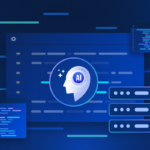
Navigating the Challenges of Rapid AI/ML Advancements
Designing a singular AI/ML system amidst the rapid advancements in applications and models, such as XGboost, deep learning recommendation models, and large language models (LLMs), presents significant challenges. Each type of model has unique demands: LLMs require high TFlops for processing, while deep learning models often encounter memory limitations. These diverse requirements necessitate a strategic approach to system design and resource allocation.
Exploring Workload-Optimized Solutions
To enhance the cost-effectiveness of AI/ML systems, it is crucial to explore workload-optimized solutions. This involves evaluating efficiency metrics like cost-to-serve and performance per dollar within a given Service Level Agreement (SLA). By focusing on these metrics, organizations can ensure that their systems are not only high-performing but also economically viable. This approach allows for more precise budgeting and resource management, ultimately leading to better overall system efficiency.
Collaborative Hardware and Software Design
Maximizing infrastructure efficiency requires a collaborative approach to hardware and software design across all layers of the system. This holistic strategy ensures that all components work together seamlessly, optimizing performance and reducing bottlenecks. In this context, leveraging existing infrastructure effectively while building new capabilities is essential. Various examples can illustrate how to balance these elements to scale infrastructure efficiently and meet the growing demands of AI applications.
Industry Partnerships and Open-Source Engagement
Fostering industry partnerships and engaging in open-source optimizations are pivotal for driving efficiency and innovation. Collaborating with other organizations allows for the exchange of ideas and learnings, which can lead to significant advancements in scaling infrastructure. By participating in open-source projects, companies can contribute to and benefit from collective efforts to improve AI/ML system performance and scalability.
Conclusion: Embracing a Holistic Approach
In conclusion, addressing the challenges of designing and scaling AI/ML systems requires a comprehensive
approach that incorporates workload optimization, collaborative design, and industry partnerships. By focusing on efficiency metrics, leveraging existing infrastructure, and engaging with the broader AI/ML community, organizations can build robust systems that meet the evolving demands of the AI landscape. Here are the three key insights to take away:
Navigating the Challenges of Rapid AI/ML Advancements
- Diverse Model Requirements: Different models, such as LLMs and deep learning recommendation models, have unique demands, making it challenging to design a one-size-fits-all system.
- Resource Allocation: Addressing high TFlops for LLMs and memory limitations for deep learning models requires strategic resource management.
Exploring Workload-Optimized Solutions
- Efficiency Metrics: Enhancing cost-effectiveness involves using metrics like cost-to-serve and performance per dollar within SLAs to ensure high performance and economic viability.
- Precision Budgeting: Focusing on these metrics allows for better budgeting and resource management.
Collaborative Hardware and Software Design
- Holistic Strategy: A collaborative approach to hardware and software design across all system layers is essential for maximizing infrastructure efficiency.
- Leveraging Infrastructure: Utilizing existing infrastructure while building new capabilities can balance performance and scalability effectively.
Industry Partnerships and Open-Source Engagement
- Driving Innovation: Collaborating with other organizations and engaging in open-source projects can lead to significant advancements in system performance and scalability.
- Community Benefits: Participating in the AI/ML community allows for the exchange of ideas and collective efforts to improve infrastructure.
Conclusion: Embracing a Holistic Approach
- Comprehensive Strategy: Addressing AI/ML system design and scaling challenges requires a comprehensive approach that includes workload optimization, collaborative design, and industry partnerships.
- Scalable Solutions: By focusing on these areas, organizations can build scalable systems that meet the growing demands of the AI landscape effectively.
Reference from the Article : Uber
Follow us for more Updates :













